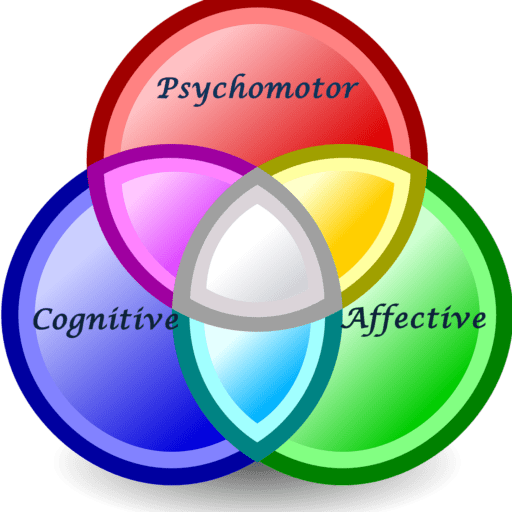Abstract:
This article explores the strategic design of a mini-course centered on refining the seemingly straightforward skill of packing a box. Originating from the identified problem of post-training issues, such as inappropriate box sizing and product damage, the study conducts behavior analysis to pinpoint crucial cognitive, affective, and psychomotor skills essential for effective packing.
Objectives, depicted as crucial steps in course design, serve as a roadmap for learners to achieve desired competencies. Developed from the domains of learning—Cognitive, Affective, and Psychomotor—these objectives form the basis for assessing learner performance and competency attainment throughout the training.
The article delves into the process of deriving course objectives from skill and behavioral analysis, illustrating the hierarchy within the domains of learning. The mini-course objectives encompass psychomotor adaptation, affective willingness, and cognitive decision-making, guiding participants toward competencies such as efficient tape gun use, creating alternative box shapes, and adhering to packaging standards.
Emphasizing the importance of clear objectives for adult learners, the article underscores the role of objectives in preventing ambiguity and disengagement. It advocates for collaborative adult learning, fostering competency attainment through information exchange between learners and instructors.
As a bonus, the article provides a comprehensive overview of the entire shipping course, mapping identified domains of learning to each step in the process. This practical example illustrates the interconnectedness of cognitive, affective, and psychomotor skills in the holistic development of competencies.
In conclusion, the article highlights the significance of well-defined objectives in facilitating meaningful learning experiences and competency attainment. It advocates for a structured approach to skill development, leveraging diverse domains of learning to effectively achieve desired outcomes.
Let’s continue with our “simple” skill of Packing a Box from Step 3, Behavior Analysis. Should be simple, right? Here’s what we know so far.
Our Original Problem was that after our training, our employee was still
- Stuffing items in too small of boxes or having them “swim” in too large of boxes.
- And we were still getting Customer calls that the items were cracked or damaged.
From there we analyzed the skill of packing in behavioral terms and concluded that packing requires:
- the ability to mechanically work the tape gun and -other packing tools – Doing
- The ability to be able to create a new type of box out of other boxes when you do not have the correct size box for the items being shipped. – Thinking
- A willingness to visualize how the box may be thrown around during shipping and how to add packing materials that will protect the items inside the box. – Feeling
- The ability to apply the standards of packaging set by the business to each box. – Thinking

Now we need a bit more specific information to set our training objectives.

Objectives are the steps along the way of your course design that enable learners to achieve the desired outcome or competency. They are the road map through the course. Objectives also serve as the foundation for you and your learners to assess performance to determine whether the objective, and then the competency has been met or not through the learning experience. Objectives are developed from Domains of Learning.
The domains of learning are presented below to give you a feel of the hierarchy. Within CFAL you will be exploring objectives within objectives, because the deeper you go, the more precise your objectives will be and the more targeted your learning experiences in facilitating learner competence.
Thinking skills belong to the Cognitive Domain of Learning. Feelings and Attitudes are in the Affective Domain, and physical skills are in the Psychomotor Domain of learning.
Below demonstrates how course objectives are derived from our skill and behavioral analysis.
Using the Domains of Learning for a mini course on Packing a Box.
Behaviors required to Pack a Box
Objectives for a mini course on Packing a Box
Packing an item in a box requires:
- The physical, hands-on part of packing requires
- Psychomotor domain Level 4 mechanisms – to mechanical work the tape gun and other packing tools) and
- Psychomotor domain Level 5 adaptation – to be able to create a new type of box out of other boxes when you do not have the correct size box for the item
- Deciding what type of box to use and what padding is needed requires an
- Affective domain Level 3 – willingness to visualize how the box may be thrown around during shipping and how to add packing materials that will protect the items inside the box.
- Cognitive Domain Level 3 –pack the box the way the business determined to be the safest and most cost effective.
By the completion of this mini course, participants will be able to:
- Use a tape gun to prepare and seal a box effectively and efficiently.
- When necessary, create a different shape and size of a box that will pass shipping regulations.
- Select appropriate size box for products in the order.
- Determine the appropriate amount of packing material to avoid product damage if the box is dropped.
- Apply written standards of packaging set by the business to each box for safety and cost effectiveness.
Objectives clarify the expectations for and adult learner. Without objectives every experience becomes a guessing game. Learners ask themselves “OK, so what was I suppose to learn from that lecture” or tell themselves “I know that all ready, I really don’t want to be here” or just ignore what is going on in the class and think about something else.
Adult Learning is collaborative learning, with learner and teacher exchanging information, so that by the end of the training, the learner has attained the competency intended. Specifically, telling a student what to do is rarely congruent with achieving the most elements of a competency. It’s rote performance, without the ability to adapt to changing circumstances.
BONUS: I have included below how my entire shipping course looks when the Domains of Learning are identified for each Step in the process. Sorting out the types of behaviors necessary for a skill or competency allows you to write realistic and meaningful objectives for your course or workshop. I’ve included it here an an example of the skill set you may choose to develop during this course.
A competency, or complex skilled performance, is composed of many small or elements necessary to perform the competency.

These elements are defined in educational terms by the domains, unique areas of influence in learning.
Cognitive domain is concerned with intellectual or thinking activities. The behaviors are sequenced from the simple act of recalling information to the more complex mental processes of thinking and problem solving.
- Knowledge
- Comprehension
- Application
- Analysis
- Synthesis
- Evaluation
The Affective domain is concerned with the feeling and emotional aspects of human function. The behaviors range from awareness of feelings, to values, to the most complex emotional activity of acting on a value system.
- Awareness
- Willingness
- Valuing
- Committment
- Organization
- Characterization
The Psychomotor domain is concerned with physical activities. The behaviors are sequenced from the simple act of perceiving objects, to the complex behavior of creating new motor actions.
- Perception
- Set
- Guided Response
- Mechanism
- Adaptation
- Origination
Looking at our example in Step 2, and the errors that occurred after training by lecture/demonstration, it’s now possible to determine that competence in shipping requires certain behaviors from each of the domains of learning.
STEPS
SKILLS C=Cognitive, A=Affective, P=psychomotor
To print a customer order requires:
- Basic Computer Experience – C & P
- Attention to detail – C& A
- When not correct, problem solving – C & A
To collect and match products for the order requires:
- Identification – C
- Patience – A
- Sense of responsibility – A
To pack the order requires:
- Visualization – C & A
- Observation – C
- Decision making – C
- Packing skills – P
To produce and apply the shipping label requires:
- Concentration – C
- Caring – A
- Evaluation and decision making – C
- Conscientiousness – A
To complete the order and ship requires:
- Packing skills – P, A, C
- Computer skill – C
- Completion skills – A



